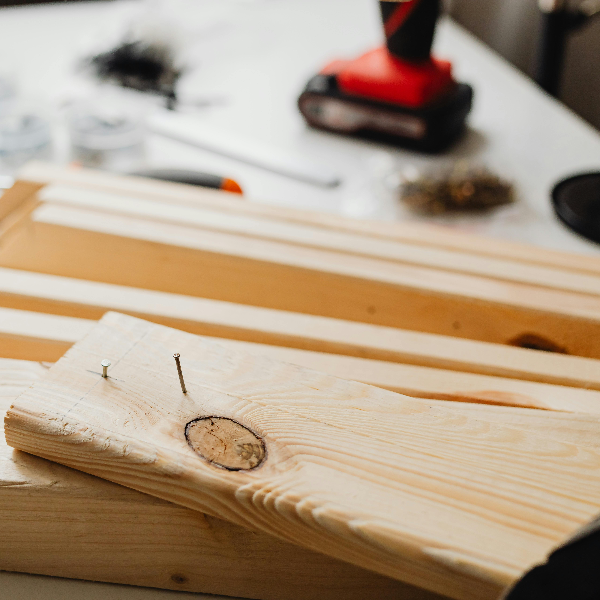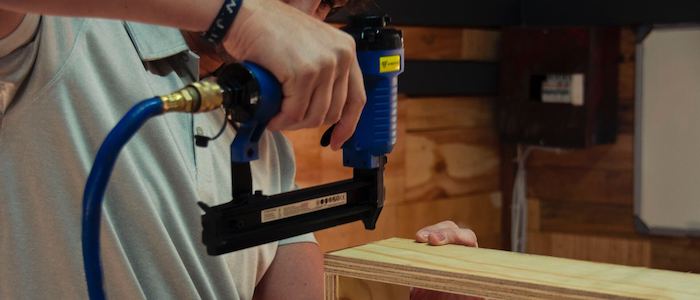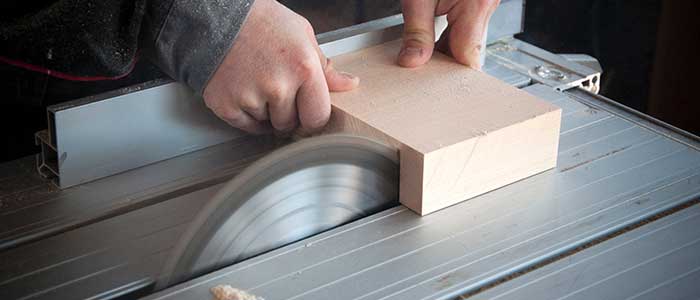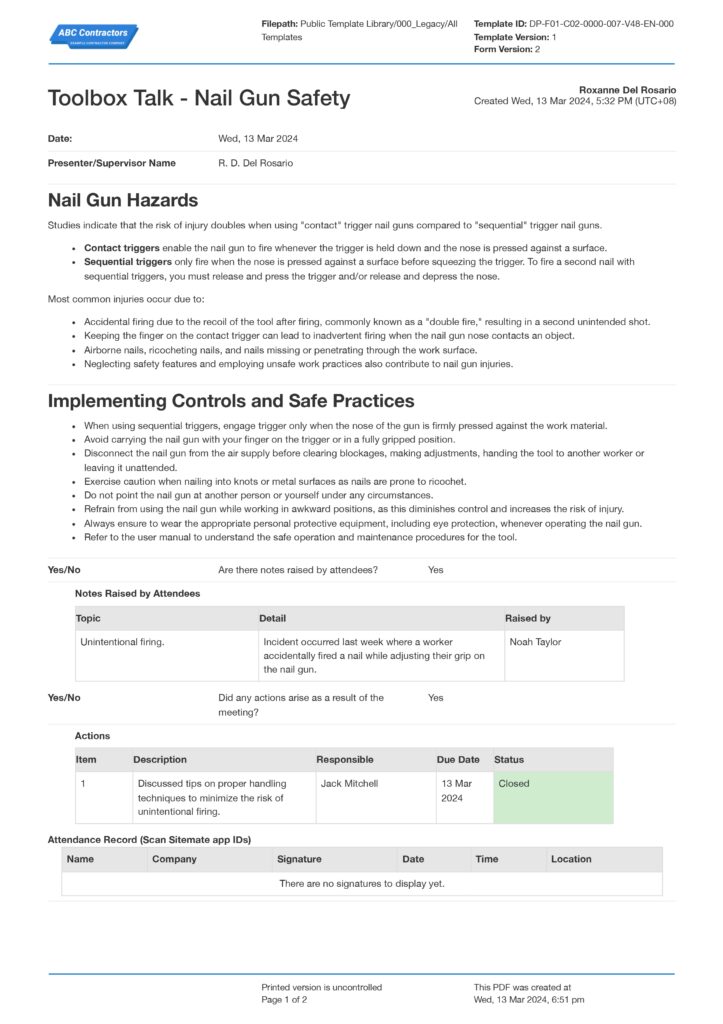Dashpivot Article – Nail Gun Safety Tips
Nail Gun Safety Tips
In this article, we will be covering the most important nail gun safety tips, and how to make everyone on your team aware of these tips.

Nail Guns in the Industry
Over the years, human innovation has advanced. In every sector, we have developed hundreds of tools to aid us in our everyday tasks. Power tools were one of our most significant breakthroughs. Although they are more rapid, accurate, and efficient, these instruments are often based on hand tools. Nail guns are a particular kind of incredible power tool. This device operates by accelerating a nail gun's piston, which then slams it into a nail's head. This uses a single, adjustable impact to force the fitting into the wood. The nails, which range in length from 15 to 100 mm, are stored in a magazine. A gadget like this may save you a significant amount of time and effort. They eliminate practically all of the labour that is involved in manually hammering a nail.
The Dangers of Nail Guns
However, despite the fact that they are a valuable instrument in a variety of industries, particularly in the construction industry, nail guns are dangerous power instruments.
An accident using a nail gun occurred in two out of every five residential carpenter trainees over the course of four years, as reported by the Occupational Safety and Health Administration (OSHA).
Having said that, it is necessary to have an understanding of the dangers associated with nail guns in order to develop safety criteria that will prevent injuries and deaths. For the purpose of this portion of the post, we will be talking about the risks that are associated with using nail guns.
Knocking the safety contact with the pressed trigger caused unintended nail discharge.
If the safety contact point is accidentally hit or pushed into an item or person while the trigger is pulled, nail guns with contact and single-actuation triggers will discharge. Single-actuation trigger nailers may injure through a single nail, whereas contact trigger nailers can injure with numerous nails.
Unintentional nail discharge is more likely when contact trigger or single-actuation trigger nail guns are held or carried with the trigger pressed. Because it seems more natural to wield and carry an 8-pound nail gun with a full, four-finger grip, construction workers often maintain a finger on the trigger. However, tool makers do caution against it.
Unintended nail discharge from double fire
Contact trigger nailers have been shown by the Consumer Product Safety Commission (CPSC) to be prone to double-firing, particularly when attempting to precisely position the nailer against the workpiece. They discovered that a second unintentional firing may occur more quickly than the person can react and pull the trigger. Unintentional firing of nails may result in harm. New workers may press hard on the tool to compensate for recoil, which might lead to double firing. Additionally, it may happen when the user is in an uncomfortable posture, including in confined locations where the pistol has little room to recoil. In confined places, the nail gun's recoil may potentially injure the user's head or face in addition to their nails.
Nail ricochet after striking
As soon as a nail makes contact with a hard surface, it is forced to reverse its trajectory, and it has the potential to bounce off the surface, turning into a projectile. Ricochets are often caused by components such as metal frame bolts and knots in wood. In addition, ricochets have been seen to be a problem when nailing into thick laminated beams. Injuries may be caused by ricochet nails if they come into contact with the worker or personnel around the working area.
Missing the work piece
When the tip of the nail gun does not make complete contact with the workpiece and the nail that is released gets airborne, there is a possibility that anyone may sustain an injury. Whenever you nail close to the edge of a workpiece, such as a hard metal plate, you run the risk of experiencing this. There is a greater degree of difficulty in positioning the safety contact in these circumstances, and there are instances in which the fired nail totally misses the timber. There have also been instances of injuries occurring as a result of a nail that was blasted through plywood or oriented strand board sheets without hitting a stud and becoming airborne.
Penetrated nails through workpiece
Nails may fly off as projectiles (airborne nails) or strike the worker's hand after passing through a workpiece. An example would be a blow-out nail. When a nail is positioned close to a knot in the wood, blow-outs may happen. A shift in wood grain caused by knots may result in both hard and weak places, which can cause the nail to veer out of the workpiece. When a piece of timber has to be manually held in place during installation labour, nail penetration is particularly problematic. The nondominant hand holding the nail may sustain injuries if it misses or breaks through the timber.
Awkward position
The danger of damage may rise if you nail in awkward postures where it is more difficult to control the instrument and its recoil. Toe-nailing, nailing over shoulder height, nailing in confined spaces, using the nondominant hand to handle the nail gun, nailing on a ladder, and nailing while the user's body is in the line of fire (nailing in your own direction) are a few examples. Because the gun cannot be held flat against the workpiece, toe-nailing is problematic. It is challenging to precisely place the nail gun while nailing from a ladder. The user is also in danger of falling if they nail further than is comfortable from a ladder, high work platform, or leading edge.
Removing safety mechanisms
There is a significant danger of harm if certain characteristics of the trigger or safety contact tip are disregarded or disabled. For instance, the likelihood of an unintentional discharge increases when the spring is removed from the safety contact point. Anybody using the nail gun may have safety issues as a result of tool modifications. Manufacturers of nail guns explicitly advise against evading safety measures, and voluntary standards forbid tampering or alterations. All hand and power tools and comparable equipment, whether provided by the employer or the employee, must be kept in a safe condition in accordance with OSHA's construction standard, 29 CFR 1926.300(a). To know more about Nail Gun Safety Requirements, check this out: OSHA nail gun safety
Providing Awareness of Nail Gun Hazards
The nail gun hazards have been laid out. The next step would be informing relevant personnel about these. The best platform to do this is through toolbox talks. Toolbox talks are short informal meetings that target safety topics in their discussions. It is also an avenue where workers can voice out their safety concerns and issues with regards to the activities they are involved in. To have an effective toolbox talk, a toolbox talk form must first be created. The toolbox talk form should contain the necessary safety topics, a field to write the concerns, and a field for employees to write their signatures to signify that they have understood the talk. Toolbox talks are vital to organisations since their primary role is to foster a safe and healthy working environment. To understand better what a toolbox talk should look like, we provided an example that is in line with the topic of this article.
Nail Gun Safety Tips Toolbox Talk Example

Use this free Nail Gun Safety Tips Toolbox Talk free
Nail Gun Safety Tips
In this section of the article, we will be providing you with safety tips that you could follow to enhance overall safety when using nail guns.
Nail Gun Safety Tip - Full sequential trigger types are the safest
The full sequential trigger is always the safest trigger mechanism for the job. It reduces the risk of unintentional nail discharge and double fires—including injuries from bumping into co-workers. This type of nail gun will always prompt the user to first press the safety tip against the work surface before firing the nail. The sequence is repeated for each nail being fired, which prevents accidental and rapid firing.
Trainings and Seminars
Trainings and seminars are excellent ways to acquire information and skills, particularly for newly hired employees. Workers are able to acquire sufficient information to be aware of the dangers that nail guns present if they get the appropriate training. They will be able to cultivate a sense of safety responsibility as a result of this, which will allow them to always take the proper safety precautions while using the power tool in question.
Providing Operational Procedures
It is strongly suggested that a standard operating procedure be developed for the use of nail guns. It will be beneficial for workers to have a handbook that outlines the procedures to use the power tool, as this will lessen the likelihood that they will make mistakes when using the nail guns. Additionally, this will be used as teaching material for the purpose of delivering seminars and trainings specifically pertaining to nail gun safety.
Protective Equipment
Personal protective equipment will serve as armour for personnel using the nail gun, which reduces the risks of injuries. The following personnel protective equipment is recommended to be worn when operating a nail gun: safety goggles, hearing protection, heavy-duty gloves, safety shoes, hard hats, long sleeve shirts, and durable pants.

Job Hazard Analysis for Carpentry
Keep carpentry work safe from hazards and risks with the Job Hazard Analysis for Carpentry

Safe Work Method Statement for Power Tools
Power tools pose a constant hazard and risk to many workers. Ensure everyone is using and managing power tools properly with a good SWMS.

Safe Work Method Statement for Carpentry
Keep workers performing carpentry work safer, and all of your SWMS for carpentry records

